Mechanical Seal Installation Instruction
Mechanical seal is a precise shaft sealing component. It must be properly installed and used correctly to realize the sealing function and to ensure its safe and reliable operation.
1. Preparation before installation
1) Before installing the mechanical seal, it must be ensured that the relevant equipment and systems have been deactivated and in a non-operating state, and it has reached the ambient temperature and atmospheric pressure. It is must to understand the damage degree to the personnel caused by the residual liquid in the equipment so that the
necessary safety measures can be taken, and ensure the personal safety during installation of mechanical seal.
2) Clean the mechanical seal assembly before installation, and apply some oil or butter on the shaft surface to prevent non-metallic components (such as rubber O-rings) from being damaged during installation. Special attention: the rubber ring of EPDM material can not be in contact with oil or grease. At this time, it is recommended to use water or silicone oil for cleaning and lubrication.
3) The surface roughness of the parts in contact with the mechanical seal shall not be greater than Ra3.2. The position where the seal ring passes shall have a smooth transition chamfer. The shoulder chamfer shall be 3*10° or rounding, and the end cap chamfer shall be 2~ 2.5*20°. (Figure)
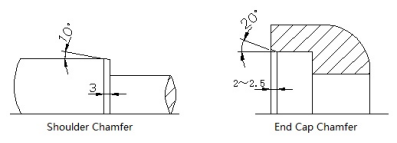
4) Radial runout of single-stage pump shaft is not more than 0.05-0.085mm.
5) Axial end run is less than 0.1mm. (Figure 1)
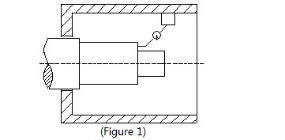
6) The verticality of the seal cavity end and the shaft is less than 0.1mm. (Figure 2)
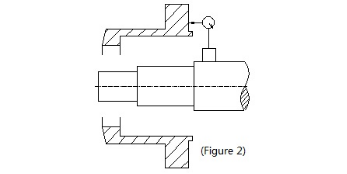
7) The axial movement of the pump shaft is not more than ±1mm.
(Special requirements according to the actual design)
2. Installation sequence:
1) Before installation, it is recommended to make the following inspections: (1) Check the length and inner diameter of the mechanical seal sleeve, or compare it with the size of the replaced old mechanical seal, or use a mechanical seal and shaft test method to check the sleeve. (2) Check the fitting dimensions of the seal chamber and the mechanical seal and the screw connection dimensions. After checking the relevant dimensions, install it after correctness.
2) For bulk type light mechanical seals, it is necessary to ensure that the working length dimension of the mechanical seal meets the design requirements (illustrated size L1) during installation. Please refer to the company's sample for the model specifications for the working length dimensions of the different models and specifications. After confirming the working length, tighten the drive screw of the moving assembly to the corresponding position of the pump shaft. Then, install the stationary ring on the gland, fasten the cover, and tighten the cover screw.

3) For bulk-mounted mechanical seals, due to structural or installation position restrictions, etc., they cannot be assembled into a single seal.
When mounting, it is necessary to ensure that the axial positioning dimension of the seal meets the design requirements (illustration size L1); different Model Specifications Positioning Dimensions, please refer to
the enclosed assembly drawings and samples in the enclosure. After confirming that the L1 size meets the requirements, install the corresponding parts, install the remaining parts, and finally evenly lock the cover screws.
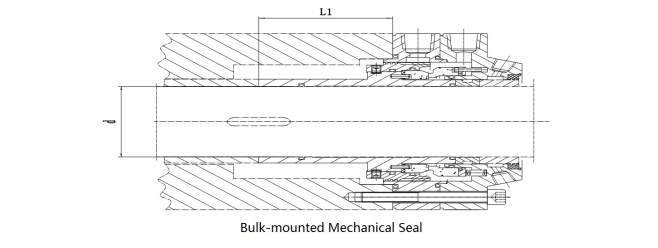
4) For cartridge mechanical seals (illustration), other adjustments have been made to the mechanical seal during factory assembly. The mechanical seal sleeve is directly placed on the pump shaft, the gland screw is locked, the drive screw is tightened, or the lock is tightened. The installation is completed after the positioning block or limit device is removed.
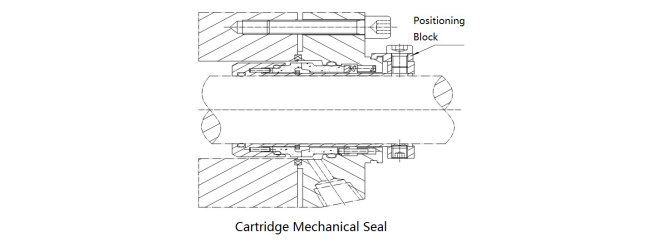
5) In the installation process must be careful, not strong, not to percussion. When fastening the gland screws, the screws should be evenly pressed. After the installation is complete, a static pressure test is required. If the mechanical seal leaks, it should be dismantled to find the cause and the leakage faults can be eliminated before continuing the subsequent installation.
6) When installing the mechanical seal with rotation requirements, it must be confirmed that the rotation direction of the main shaft is the same as the direction of the mechanical seal to ensure the normal operation of the mechanical seal after installation.
3. Operation:
Before starting the pump, open the flushing or cooling system to ensure that the system is operating normally. Then carry out the safety inspection, and then check the turning gear and start the operation after
the rotating shaft is normal.
4. Requirements for ancillary facilities
1) The pressure of cooling water should not be too large, and the general situation is not higher than 0.3 MPa, and it can be naturally flowed.
2) The pressure of the high-pressure flushing water should be 0.1~0.2MPa higher than the working pressure of the sealed chamber, and the flow rate should be about 0.5L/S.
3) For pressure double-end mechanical seals, the pressure of the seal fluid should be 0.1~0.2MPa higher than the working pressure of the seal chamber.
4) Restart the device every time after the flushing water or cooling water is turned on for five minutes. Stop the equipment for five minutes and stop flushing water or cooling water. It is not allowed to run or test in the state without flushing water or cooling water, so as to avoid mechanical seal damage caused by dry friction running.
